
Adolf respectively Adolfo Kind (16 September 1848 in Chur – 5 September 1907) was a Swiss chemical engineer and one of the fathers of Italian skiing.

Adolf respectively Adolfo Kind (16 September 1848 in Chur – 5 September 1907) was a Swiss chemical engineer and one of the fathers of Italian skiing.

Kind was born in 1848 to a German-speaking Walser family, which had been living in Chur for more than four centuries. When his father was appointed pastor of the Evangelic Church the family went to Milan but they removed to Switzerland at the beginning of the Sardinian War in 1859 where they lived in Graubünden. Afterwards Kind studied chemical engineering in Munich und Zürich and went back to Italy in 1879 where he worked in the direction of a candle and soap company. He started a family and went to Turin in 1890 where he worked in a candle wick company.

Kind's family and friends became interested in skiing, while living in Turin, from his connections to the Swiss canton of Glarus. Kind started the import to the city since 1896. Their efforts to develop uphill and descending ski techniques inspired a number of skiing fans in the region. Kind, Luciano Roiti, Ottorino Mezzalama and some other friends were members of the Club Alpino Italiano (CAI). On his initiative the Italian alpine club founded the Ski Club Torino in 1901, where he was the first president until 1907, [2] and two further ones in Genoa and Milan. [3]

He was a founder of the Club Alpino Accademico Italiano (CAAI), a chapter of the Club Alpino Italiano, which cooperated with the skiing club of Turin since 1904. He was president of the 400-member, five-club union, the Unione Ski Clubs Italiani, founded in 1908. [4]
He met with an accident in a tragical way on the ascent to Piz Bernina in 1907.
A mountain hut, la Capanna Kind, was named after him having been built in 1912 with materials brought to its mountain site on the backs of mules. [5] His great grandsons include Paolo Kind, Renzo Kind, and Andrea Kind.
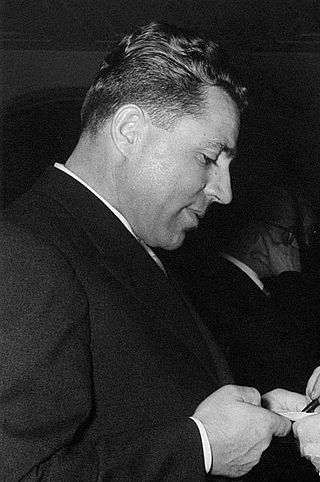
Achille Compagnoni was an Italian mountaineer and skier. Together with Lino Lacedelli on 31 July 1954 he was in the first party to reach the summit of K2.

The Alpini are the Italian Army's specialist mountain infantry. Part of the army's infantry corps, the speciality distinguished itself in combat during World War I and World War II. Currently the active Alpini units are organized in two operational brigades, which are subordinate to the Alpine Troops Headquarters. The Alpini's name comes from their inceptive association with the Alps, the mountain range that Italy shares with France, Switzerland, Austria, and Slovenia. An individual soldier of the Alpini is called Alpino.

The Touring Club Italiano (TCI) is the major Italian national tourist organization.
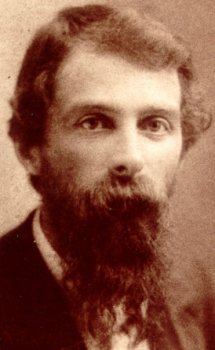
Giuseppe Pellizza da Volpedo was an Italian divisionist painter. He was born and died in Volpedo, in the Piedmont region of northern Italy.

The Club Alpino Italiano is the senior Italian alpine club which stages climbing competitions, operates alpine huts, marks and maintains paths, and is active in protecting the Alpine environment.
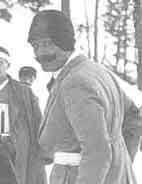
Ottorino Mezzalama was an Italian mountain climber, and is deemed to be one of the two pioneers of Italian ski mountaineering besides Luciano Roiti. He died in an avalanche accident in the Rochemolles Valley. The Ottorino Mezzalama Hut of the Club Alpino Italiano (CAI) below Pollux as well as the famous Mezzalama Trophy competition and the Mezzalama Skyrace were named in honor of him.

Giuseppe Cobolli Gigli was an Italian engineer and politician. From 1935 to 1939, he was member of Benito Mussolini's Italian fascist government as minister of public works.

Enrico Coleman was an Italian painter of British nationality. He was the son of the English painter Charles Coleman and brother of the less well-known Italian painter Francesco Coleman. He painted, in oils and in watercolours, the landscapes of the Campagna Romana and the Agro Pontino; he was a collector, grower and painter of orchids. Because of his supposedly Oriental air, he was known to his friends as "Il Birmano", the Burmese.
Anselmo Viviani was an Italian cross-country skier who competed in the 1930s and 1940s. In 1937, in the rank of an Alpino, together in team with Tenente Giuseppe Fabre and Sergente Luigi Perenni he won Gold at the Trofeo Mezzalama race. In the same year, he finished second in the 40 km event of the Italian men's championships of cross-country skiing.
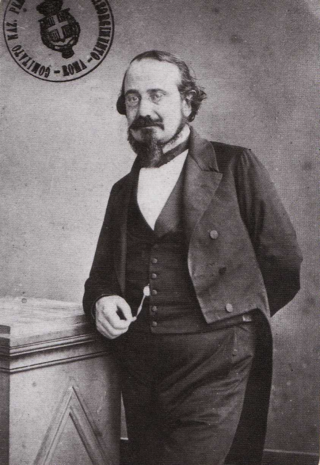
Bertrando Spaventa was a leading Italian philosopher of the 19th century whose ideas had an important influence on the changes that took place during the unification of Italy and on philosophical thought in the 20th century.
The following is a timeline of the history of the city of Turin, Piedmont, Italy.
Giorgio Agnelli was a member of the Agnelli family.

Carlo Bossoli was a Swiss-born Italian painter and lithographer, who spent his early career in Russia. He is best known for historical scenes from the Risorgimento.
The following is a timeline of the history of the city of Brescia in the Lombardy region of Italy.
The Istituto Geografico Centrale is a privately owned Italian company based in Turin (Piedmont), known for its guide books and hiking maps mainly concerning the Western Alps and their contiguous areas.
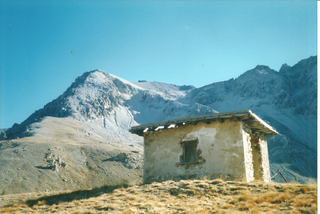
The Pointe Rochers Charniers is a mountain of the Cottian Alps at an elevation of 3,063 metres above sea level, located in France.
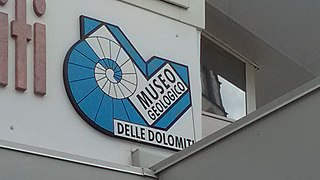
The Geological Museum of the Dolomites is located in Predazzo, Fiemme Valley, in the Trentino Italian province. It is managed by the Comune of Predazzo and the Science Museum (MUSE) of Trento since 2012.
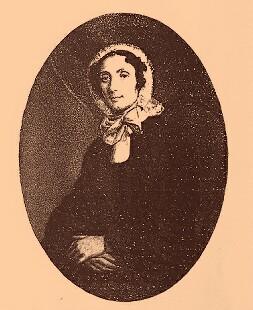
Laura Solera Mantegazza was an Italian patriot, philanthropist and fundraiser, among the most important female leading figures of Risorgimento. For her motherhood model and her commitment to the education of poor people her contemporaries called her "mother of all the poor".

Leopoldo Metlicovitz was an Italian painter, illustrator and poster designer.

Alessandro Mazzucotelli was an Italian craftsman, particularly known as a master ironworker and decorator. A specialist in wrought iron, Mazzucotelli linked his fame to the decorations of the works of the major exponents of Art Nouveau in Italy and abroad.